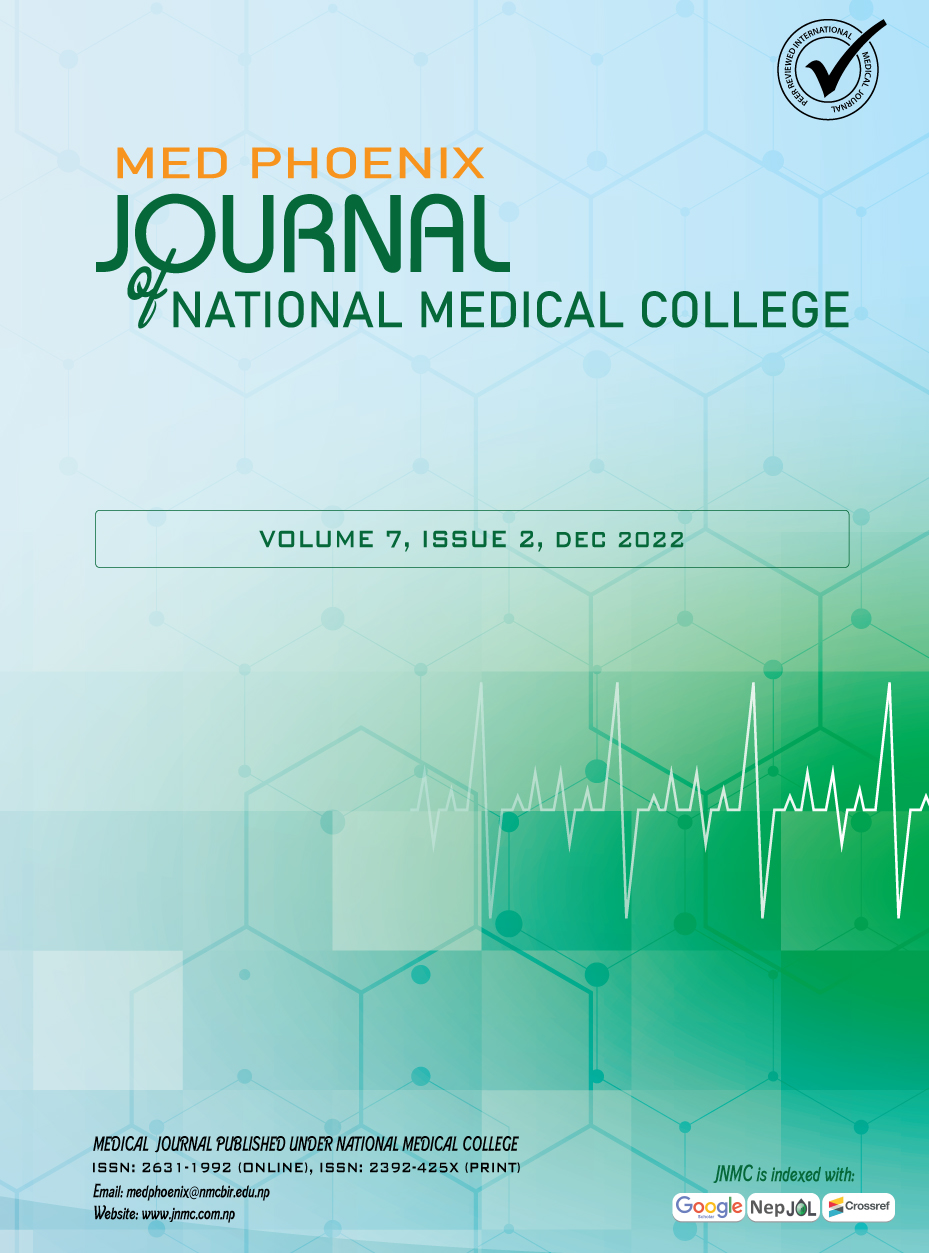Intraoperative findings during Open mastoido-epitympanectomy at a tertiary center
DOI:
https://doi.org/10.3126/medphoenix.v7i2.46878Keywords:
Cholesteatoma, Chronic otitis media squamous, Ossicular chain, Open mastoidoepitympanectomyAbstract
Introduction: Chronic otitis media is a common entity in our country. Surgical eradication of disease is the treatment of choice for squamous chronic otitis media. The objective of this study was to assess the pathology, its extent and associated complications in patients who underwent open mastoido-epitympanectomy for chronic otitis media squamous at a tertiary care center (Dhulikhel Hospital) in Nepal.
Materials and methods: Medical records of 111 patients who underwent OMET at our center from June 2017 to June 2021 were analyzed retrospectively. Demographic parameters, clinical presentation, audiometric data, intraoperative pathology and their distribution, involvement of bony landmarks and ossicular chain status were recorded and analyzed.
Results: There were 64 male and 47 female patients included in our study. Their age ranged from 6 to 69 years. The commonest finding during examination under microscopy was posterosuperior retraction pocket (42.3%). Cholesteatoma was the commonest intraoperative pathology (86.5%), majority with cholesteatoma widespread involving both tympanic and mastoid cavities. Ossicular chain erosion was reported in 96.4% patients.
Conclusion: Squamosal otitis media is common in our setup, with extensive distribution of pathology in middle ear cleft, and possible bony landmarks erosion.
Downloads
Downloads
Published
Versions
- 2023-01-06 (2)
- 2022-12-31 (1)
How to Cite
Issue
Section
License
Copyright (c) 2022 Med Phoenix

This work is licensed under a Creative Commons Attribution 4.0 International License.
This license enables reusers to distribute, remix, adapt, and build upon the material in any medium or format, so long as attribution is given to the creator.
Copyright on any research article is transferred in full to MED PHOENIX upon publication. The copyright transfer includes the right to reproduce and distribute the article in any form of reproduction (printing, electronic media or any other form).




